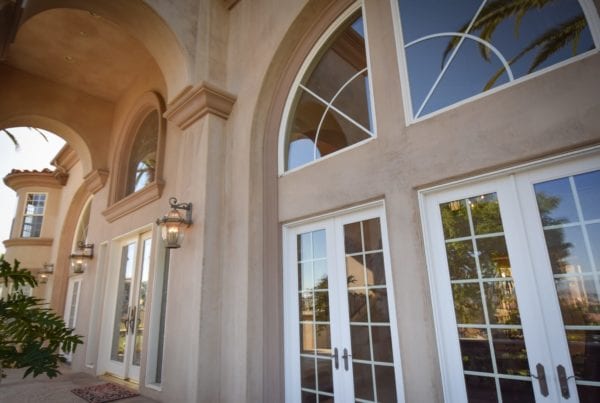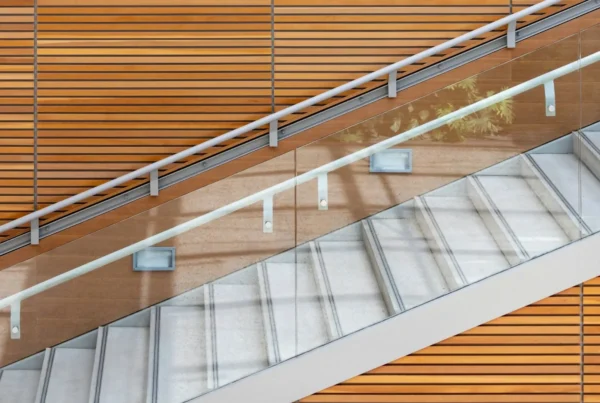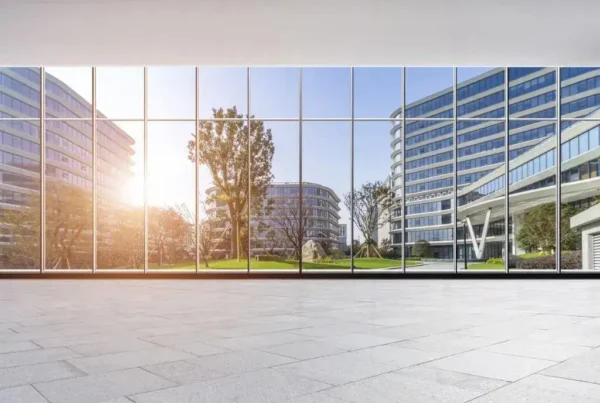
Commercial building windows serve many purposes: they let natural light in, provide views, and add to the curb appeal of a building. A building’s windows also have a big effect on how energy efficient the facility is.
Not only is having a more energy efficient building good for the environment, but it can save you hundreds of thousands of dollars a year on your utility bills. Green buildings are also more attractive to potential tenants, so you can lease revenue-generating spaces faster.
How Commercial Windows Affect Your Building’s Energy Efficiency
Different Types of Commercial Building Windows
When looking at the energy efficiency of different commercial windows, there are two main components to consider: the glass itself and the frames.
Most modern commercial facilities use some type of tempered safety glass for their windows. This is a special type of glass that shatters into thousands of tiny, harmless pieces when it breaks, instead of into jagged, sharp shards.
For a building to be energy efficient, the windows should be double- or triple-pane, meaning that there are actually two or three panels of glass set into each frame.
Though most contemporary buildings are built with these types of windows, older facilities might have single-pane glazing, which doesn’t do much of anything for energy efficiency.
Now, let’s take a look at how different types of framing can affect the energy efficiency of your windows as well.
Common types of commercial window framing:
- Vinyl
- Fiberglass
- Wood
- Aluminum
- Aluminum-clad
Vinyl windows are one of the most common types of windows in new commercial buildings. This is because they are very durable, energy efficient, and affordable. A downside of vinyl frames is that they are fairly chunky, meaning that there is less glass space in the frame.
Another popular choice for commercial building windows is fiberglass. Similar to vinyl, fiberglass windows are durable and energy efficient. In fact, fiberglass is even stronger and more resilient than vinyl.
Fiberglass frames also typically have a lower profile, so there is more room for the glass. Though fiberglass-framed windows are more expensive than vinyl ones, they’re a good investment if cost isn’t the only concern.

Though less commonly used in modern commercial construction, a third option for window frames is composite wood.
Wood-framed windows are more expensive than vinyl and fiberglass ones, but wood is even more energy efficient than other materials. Wood windows also give a building a more traditional, elegant look that modern materials just can’t achieve.
Another option you have for commercial window frames is aluminum. Aluminum is very strong, so it’s favored for very large window openings because it can support a lot of weight. However, aluminum windows are less energy efficient and require more maintenance than other varieties.

If you want the strength of aluminum with better energy efficiency, you can get aluminum-clad windows. These types of windows have aluminum on the exterior side and wood on the interior side.
Aluminum-clad window frames are more insulated than frames that are only made of aluminum, so they’re more energy efficient. And, the wood is protected from the elements by the aluminum cladding, making them more durable than wood frames.
So, now that you understand a little more about how different types of windows can impact the energy efficiency of a commercial facility, let’s move on to your options for making existing commercial windows more energy efficient.
How To Make Commercial Building Windows More Energy Efficient
Using Commercial Window Film to Improve the Performance of Windows
If your building was built with energy efficient windows, such as double- or triple-glazed vinyl windows, great! But what if you have an older facility that’s not so green? What can you do to improve the performance of your existing windows?

Replacing all your existing windows with contemporary, energy efficient models can be prohibitively expensive, not to mention disruptive to building tenants. But don’t worry, that isn’t your only option.
We have another solution for you: low-emissivity window film.
Low-emissivity window film, or low-e window film, is a special type of pliable coating that can be applied directly to the glass surface of any existing windows.
What this type of window film does is add another layer of insulation to your glass. Essentially, you’re upgrading a single-pane window to a double-pane window, or a double-pane to a triple-pane.
Low-e window film helps reflect heat back inside during the winter and keep cool air in during the summer, thus reducing the amount you need to run your heating or air conditioning system.

This not only improves the environmental friendliness and indoor comfort of your facility, but it can save you tons of money on your monthly utility bills.
In fact, many people who decide to invest in low-e window film see a return on their investment in the first year simply due to the reduced energy costs.
Benefits of low-emissivity window film:
- Quick and easy to install
- Reduces your reliance on HVAC systems
- Can be applied to any existing glass surface
- Doesn’t change the appearance of the glass
- Blocks out harmful UV rays
- Reduces glare
- Provides energy savings in all climates
If you want your building to look exactly the same, you can choose clear low-e window film. Clear film boosts the energy efficiency of your windows without altering the appearance of your glass in any way.
However, you could also seize the opportunity to give your building a facelift by opting for a tinted, mirrored, or colored variety. This can make an older building look more modern and improve its curb appeal for potential tenants.

Final Words
Windows aren’t just for letting light in and providing you with views of the outdoors. They also play a big role in making commercial facilities more energy efficient. So, don’t overlook your windows when you’re looking to make green, money-saving upgrades to your building!
We have years of experience improving the energy efficiency of commercial building windows with our window films. Contact Campbell Corporation today for more information or to schedule a consultation.






